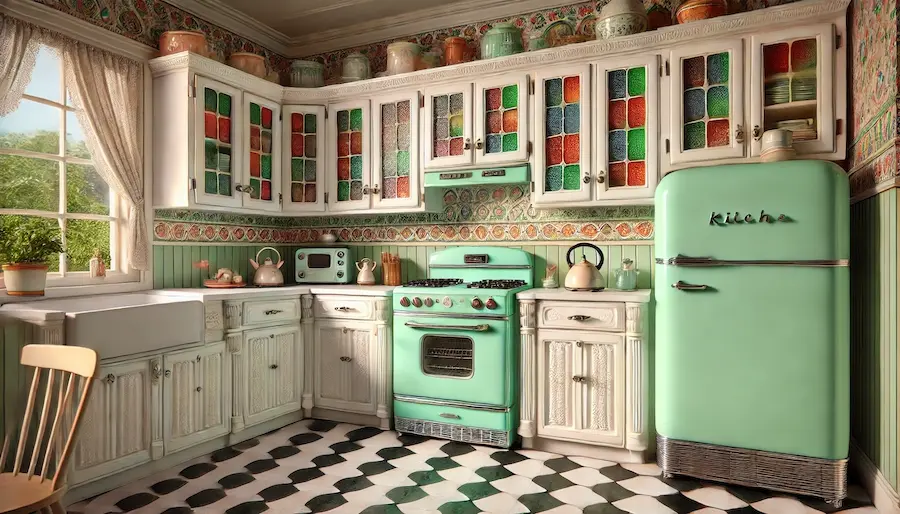A vintage kitchen design captures the charm and character of past eras, blending nostalgic elements with modern functionality. This article explores the history, key features, applications, and considerations for creating a vintage-inspired kitchen.
History and Origins of Vintage Kitchens
The evolution of kitchen design reflects broader societal changes, technological advancements, and shifting aesthetic preferences. In the late 19th and early 20th centuries, kitchens were primarily utilitarian spaces, often separated from the main living areas. The 1920s and 1930s introduced innovations like the Frankfurt Kitchen, designed by Margarete Schütte-Lihotzky, emphasizing efficiency and functionality in a compact space. Post-World War II, the 1940s and 1950s saw the rise of colorful appliances and cabinetry, reflecting optimism and a focus on domestic life. Each decade contributed unique elements that continue to influence vintage kitchen designs today.
Key Features of Vintage Kitchens
- Retro Appliances: Incorporation of vintage-style refrigerators, stoves, and mixers that combine old-fashioned aesthetics with modern technology.
- Classic Color Schemes: Use of pastel hues, bold primary colors, or black-and-white contrasts to reflect the era’s trends.
- Checkerboard Flooring: Installation of black-and-white or colored checkerboard tile floors, a hallmark of mid-20th-century kitchens.
- Open Shelving and Glass-Front Cabinets: Display of dishware and collectibles, adding to the nostalgic ambiance.
- Period-Appropriate Hardware: Selection of cabinet knobs, pulls, and faucets that reflect the design motifs of the chosen era.
Applications of Vintage Kitchens
- Historic Home Restorations: Ideal for homeowners aiming to preserve or recreate the original charm of their historic properties.
- Themed Interior Designs: Suitable for those who appreciate retro aesthetics and wish to incorporate them into their homes.
- Eclectic Decor: Blending vintage elements with contemporary features to create a unique and personalized kitchen space.
Considerations When Designing a Vintage Kitchen
- Authenticity vs. Modern Convenience: Striking a balance between maintaining authentic vintage aesthetics and incorporating modern appliances for functionality.
- Material Selection: Choosing durable materials that reflect the chosen era’s style while meeting current safety and maintenance standards.
- Color Harmony: Ensuring that the color scheme is cohesive and complements the overall design of the home.
- Space Planning: Designing the layout to accommodate modern usage patterns while preserving vintage charm.
Conclusion
Vintage kitchen designs offer a nostalgic journey into the past, allowing homeowners to create spaces that are both charming and functional. By thoughtfully selecting period-appropriate elements and balancing them with modern conveniences, you can design a kitchen that reflects the beauty and character of bygone eras while serving the needs of today’s lifestyle.
